Workout app development is the next big thing in the FitTech world.
Ever since Corona, workout applications have been getting super popular whether you talk about diet tracking apps or workout tracking ones.
But one workout solution that leaves every other behind is the Workout app.
People barely have time to do anything, let alone dedicate a few years to work with a trainer or create their own workout regime. And why should they when workout apps are doing it all for them?
This and the fact that it saves a lot of time, and money while providing better results, workout app development has become an investor’s favorite.
Are you interested in it?
If you are this blog is for you. Here, we shall be discussing all you need to know about workout app development. By the end of this guide, you will
Workout App Market Stats Worldwide
Let’s start by addressing the big question first, is there money to be made in the workout app market? Well, the answer is a quick and big YES.
Here are some workout app market statistics to gain a better understanding of the industry and its opportunities.
- You see, the global workout app market is expected to reach USD 4.8 billion by 2030, growing at a compound annual growth rate (CAGR) of 17.6% from 2023 to 2030.
- On the other hand, revenue from workout apps which was at $5.00 Billion in 2023 will hit $10.04 Billion by 2028.
- 26% of workout app users use their apps 10+ times/week.
Sounds amazing, right? Well, there are a lot of other amazing facts about workout apps and the workout market as a whole. But we won’t be getting too deep into that.
What is a Workout App?
Recently, there has been a rise in demand for both workout apps and workout app development, leading to a market filled with a number of solutions.
One such solution is workout applications.
Workout apps are mobile-based solutions that offer a range of services surrounding workout, wellness, and diet.
The exact offerings differ from platform to platform, this is what makes workout app more of an umbrella term than a category of its own.
We shall be discussing the different types of workout apps later down the line, meanwhile, let’s see how workout apps work:
How Does Workout App Work?
If you are planning to create your own workout app, it’s a good idea to first understand how it works.
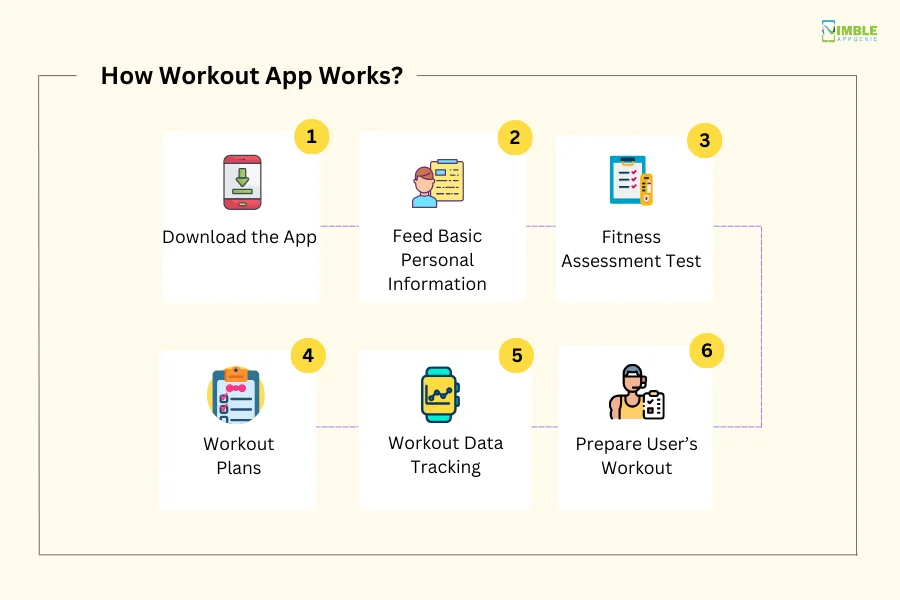
Let’s get right into it:
- Step 1: The first step is to download the app and sign up. There are various ways to sign up including via social accounts or manual account creation with a phone number or email.
- Step 2: Following account creation, it’s time to feed basic information like weight, height, body type, preferences, goals, and so on.
- Step 3: The workout app take will test users with an assessment to test fitness. Based on this and previous data the algorithm will create a workout plan.
- Step 4: Now, the workout plans are delivered which users can take advantage of. With progress, the workouts will be optimized.
- Step 5: The workout data is tracked and logged this information is used to optimize plans to further fit the user’s needs.
These are the basic functions of workout applications. However, it is not necessary that all workout platforms have to follow the same steps.
Moving on, moving a step closer to answering, how to build a workout app, let’s look at different types of workout apps.
Types of Workout Apps in the Market
Workout app development has become a trend among workout and wellness companies, as they are introducing their own names to the market.
Primary examples of the same are apps like Adidas Fitness, Nike Run Club, and so on.
Now, if you are to build a workout app for your business, it is essential to choose the right type of app. Depending on the services offered, there can be different forms of workout applications.
To give a better understanding of the same and help you choose the right one for your business, let’s go through each one of them.
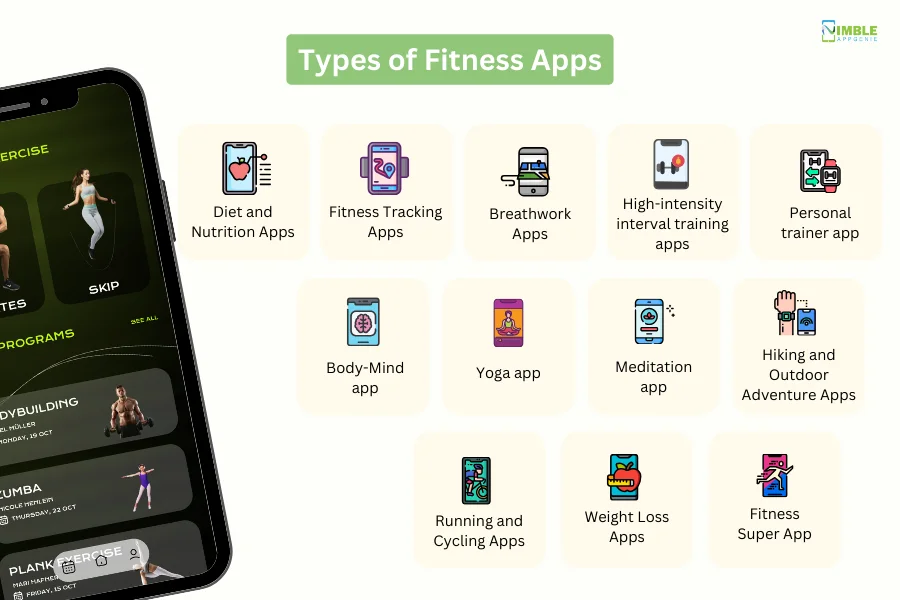
These are, as mentioned below:
Type 1: Diet and Nutrition Apps
If you are into working out, you know diet and nutrition are a big part of keeping yourself healthy. Well, that’s what diet and nutrition apps are built for.
As the name suggests, these platforms track the diet based on input data and take into account the workout goals of users to provide them with an optimal diet plan.
Considering the importance of diet, these have become very popular in the market in recent years.
Type 2: Workout Tracking Apps
Workout or habit tracker apps are yet another crucial type.
These solutions are made with the goal of tracking the workout data of users. These include their heart rate, burnt calories, intake, type of experience, sleep time, and so on.
Accurate data tracking is made possible with wearable workout technology. In layman’s terms, workout bands or smart watches.
There are more advanced versions of workout trackers that are used in professional sports like SPT Vest.
Type 3: Breathwork Apps
Any fitness freak or sportsperson knows the importance of controlling your breath. And it goes without saying, breath control is very important in medication, getting physique in sync.
This is where the Breathwork apps come in.
As the name suggests, these platforms help users control their breathing and make their body light. When it comes to sports performance, it also greatly helps reduce strain and fatigue.
Type 4: High-intensity Interval Training Apps
Speaking of sports performance, how can we not mention high-intensity interval training apps? The name says it all.
These are the types of applications that a specifically designed for a very specific type of workout.
For those who are new to the world of fitness, high-intensity interval training refers to a workout with very intense training that is administered over a short period of time, over a few repetitions.
Type 5: Personal Trainer App
For those who are much more focused on fitness and want a professional to help them train, personal trainer apps are perfect.
These apps provide users with a personal trainer who they can hire on demand. This type of workout app sits between the workout and on-demand app industry.
Type 6: Body-Mind App
True fitness is only achieved with coordination between mind and body. And that’s what these apps are built for.
This is yet another case of a niche-specific workout app that has become a popular venture for fitness companies. What these apps do is, they have a number of exercises that help a person build coordination between mind and body.
Consequently, it gives faster reaction time, and more accuracy, among other benefits.
Type 7: Yoga App
Yoga apps don’t need an introduction.
Much like regular workout apps, these platforms come with a range of Yoga that users can take advantage of.
Users can start with basic yoga and then move to a more advanced one with progress. Some platforms also offer video integration for live instructions.
Type 8: Meditation App
Well, well, who isn’t familiar with meditation apps?
With the rise in stress and general busyness of life, meditation has become a popular activity. And majority of this is driven meditation applications.
This is one of the reasons why so many businesses want to build a meditation app like Calm.
Type 9: Hiking and Outdoor Adventure Apps
Nothing gets us back to the lap of Mother Nature like a good hike or outdoor adventure.
But due to evolution and growth in civilization, we aren’t all as familiar with our wild side, as we used to be. But don’t let this bother you as hiking and outdoor adventure apps are here to save the day.
Though not the first choice when developing a workout app, they have gained popularity over the years.
Type 10: Running and Cycling Apps
This is yet another popular solution that falls under the umbrella of workout applications.
These are unique, as in addition to teaching a user how to improve their performance in running and cycling, it also maps integration.
The integration provides real-time route optimization and tracking, much like we see in driving direction apps like Waze.
Type 11: Weight Loss Apps
There are a lot of people who want to lose weight.
Modern lifestyles don’t leave much room to move around or dedicate time to the gym, after all, it is easier said than done.
Weight loss is a type of workout application that combines nutrition and workout apps to give users the best possible way to lose weight.
There are various examples in the market of weight loss apps.
Type 12: Workout Super App
With the rise of user demand and in an attempt to offer better experiences to users, a lot of companies are moving towards super app development.
The workout super app will have a combination of microservices. These can differ based on the platform, but the goal here is, to provide users with all the important data in one place so they don’t have to visit another platform.
In fact, it can also come with eCommerce platform integration.
Speaking of which, these are the various different types of workout applications. And with this out of the way, let’s look at how you can choose the right type for your business.
How to Choose the Right Workout App Type for Your Business?
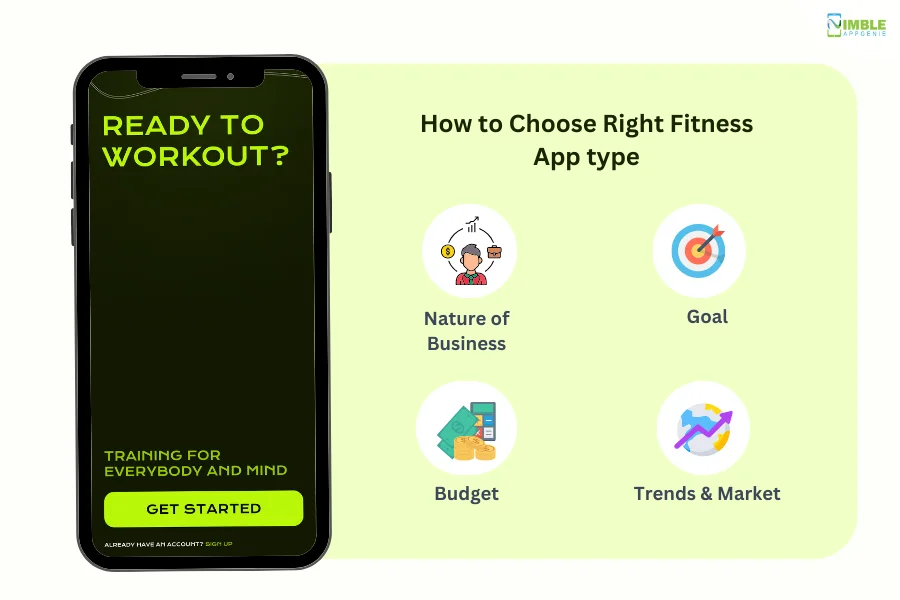
When you are planning to build a workout app, going through all the different types of solutions can be a bit confusing.
So, how do you choose the right type to build your own workout solution?
Well, there are a few things you can consider:
- Tip 1: Your business nature– if you are running a gym business, Gym management software development is recommended. On the other hand, a meditation center should invest in a meditation app. For a new business, finding the target audience base is very important first.
- Tip 2: Goal– depending on the goal of what you seek out of the solution, the type you should develop can greatly differ.
- Tip 3: Budget– it goes without saying, that while some types are simple and cheap apps, others can have a high app development cost.
- Tip 4: Trends & Market– current trends and market conditions can highly affect the future of your solution. Therefore, go with something that is in demand or trending today but can be sustained for a long time.
Why People Love Workout Apps?
Are you wondering why workout apps have become a workout trend that people can’t get enough of?
Well, you’re not alone!
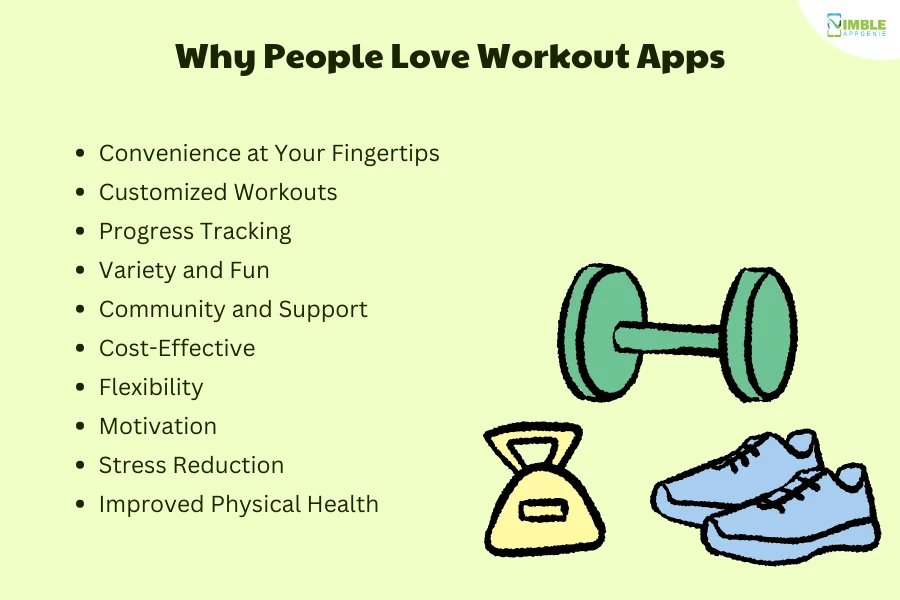
In this section of the blog, we’ll explore the reasons why people love workout apps and how they can transform your fitness journey.
1) Convenience at Your Fingertips
Workout apps offer convenience like no other.
With a vast library of exercises, guided routines, and tracking tools right on your smartphone, you can work out whenever and wherever it suits you.
No need to commute to the gym or stick to their schedule – your fitness journey is now in your hands.
2) Customized Workouts
Everyone’s fitness level and goals are different.
Workout apps get that. They provide personalized workout plans tailored to your fitness level and objectives.
Therefore, Whether you’re a beginner looking to shed a few pounds or an athlete aiming to gain muscle, there’s a workout plan just for you.
3) Progress Tracking
One of the most satisfying aspects of workout is seeing your progress.
Workout apps come equipped with tracking features that monitor your performance, such as the number of steps taken, calories burned, or weights lifted.
Furthermore, these visual cues help you stay motivated and see the results of your hard work.
4) Variety and Fun
Boredom can be a major roadblock to fitness success, don’t you agree?
Workout apps keep things interesting by offering a wide variety of exercises and routines, from yoga and HIIT to dance and strength training.
Moreover, as a user, you can switch things up whenever you like, making your workouts enjoyable and engaging.
5) Community and Support
Many workout apps have built-in social features that allow you to connect with like-minded fitness enthusiasts.
Therefore, the users can share their achievements, get inspired by others, and even join challenges. This sense of community provides motivation and encouragement on your fitness journey.
6) Cost-Effective
Gym memberships and personal trainers can be expensive. Workout apps often offer free or affordable alternatives that provide immense value.
Goes without saying that, the user gets access to professional guidance and a plethora of exercises without breaking the bank.
7) Flexibility
Lastly, one of the reasons why companies are hiring mobile app developers to create workout apps of their own is, this:
Life can be unpredictable, and sticking to a rigid workout schedule isn’t always possible.
Workout apps adapt to your schedule, allowing you to fit in workouts at your convenience, whether it’s early morning, during lunch breaks, or late at night.
8) Motivation
If a person wants to achieve something, motivation is the biggest driving factor. However, it is also one of the challenges.
Reason is that people in their day-to-day, scheduled lives, find it hard to gather motivation. Well, that’s where workout apps come in.
In addition to giving users a channel to get fit, they are filled with motivational notifications alerts, and the right environment.
9) Stress Reduction
It is no secret that the lifestyle today is filled with stress to the brim.
Whether you are a full time working with a great salary or doing multiple jobs to make ends meet, stress is filled in every part of life.
Workout apps with their many offers come as a much-needed saviour in these times, offering stress reliving via their many exercises.
10) Improved Physical Health
Last but not least, one of the biggest benefits workout platforms offer is better physical health.
Staying at a good fitness level is important to maintain quality of life. And if you want to achieve a good physical state without spending a lot in the gym, workout apps are the saving grace.
These are reasons why so many people love these apps and, consequently, why so many businesses want to make their own workout applications. Moving on, let’s look at the best workout apps in the market.
Top Workout Apps in the Market
Want to learn how to create a workout app? Well, it’s best to learn from the best fitness apps. With that said, let’s look at some of the most successful workout apps in the market.
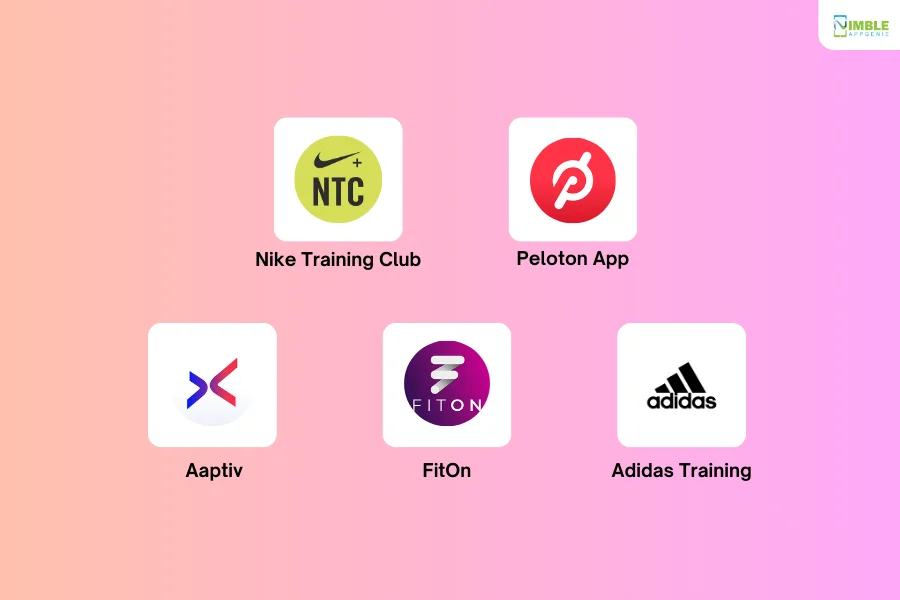
1. Nike Training Club
NTC is a free app that offers a variety of workouts for all fitness levels.
Moreover, the workouts are led by experienced trainers and are designed to help you reach your fitness goals.
2. Peloton App
Workout streaming apps like Peloton are super popular.
The Peloton App offers a variety of live and on-demand workouts, including cycling, running, strength training, yoga, and more.
In addition, you can use the app to follow along with workouts on your own Peloton bike or treadmill. Or you can use it to stream workouts to your phone or tablet.
3. Aaptiv
You have probably heard of this one.
Aaptiv is a subscription-based app that offers a variety of audio-guided workouts. You can choose workouts based on your fitness level, goals, and mood.
4. FitOn
FitOn is a free app that offers a variety of live and on-demand workouts. This includes strength training, yoga, Pilates, HIIT, and more.
You can also find workouts specifically designed for beginners, pregnant women, and seniors.
5. Adidas Running – Runtastic
Adidas Running is a free app that offers a variety of personalized workouts based on your fitness level and goals.
The app also offers a variety of training programs, such as running programs and strength training programs.
Why Should Businesses Invest in Workout Apps?
One of the first questions that investors ask, even before “How to make a workout app?” is:
“Why I should invest in this project?”
Well, there are various reasons to invest in app development when speaking about workout solutions. And in this section of the blog, we shall be discussing exactly that.
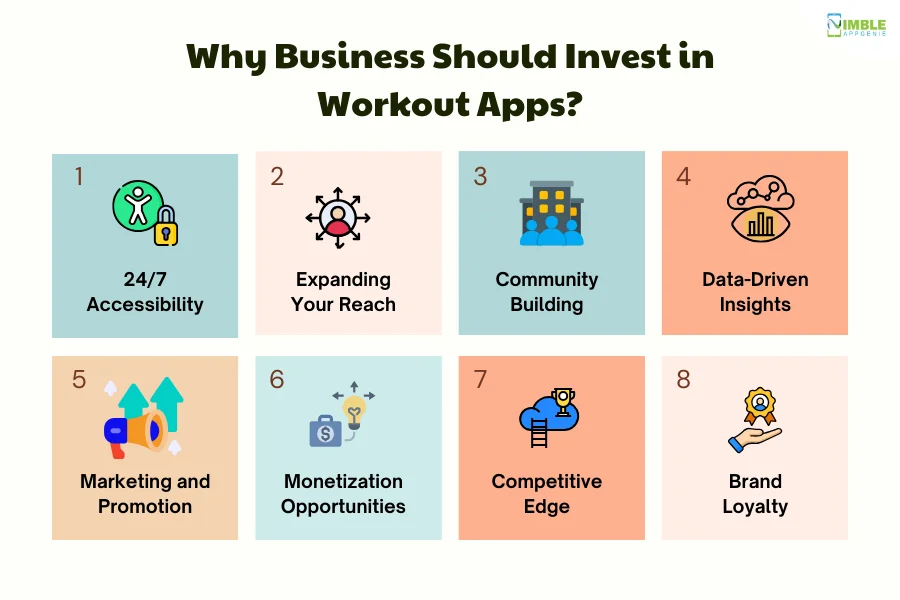
Therefore, let’s get right into it:
Reason 1: 24*7 Accessibility
Your customers want flexibility, and workout apps provide just that.
Via this app, users can access your workout programs anytime, anywhere, whether it’s early morning or late at night.
Moreover, this convenience fosters customer loyalty and ensures your services are always available when they need them.
Reason 2: Expanding Your Reach
Workout app development has the potential to help your business reach a global audience.
By offering your workout programs through an app, you can connect with fitness enthusiasts from all corners of the world.
This wider reach can help you grow your customer base beyond the limitations of physical locations. That’s how you can use this workout on-demand app for business growth.
Reason 3: Community Building
It goes without saying that when you are developing a workout app, it’s important to incorporate social features that enable users to connect with others who share their workout goals.
This sense of community can be a powerful motivator, and it can also serve as a platform for your brand’s ambassadors to promote your products and services.
Reason 4: Data-Driven Insights
Workout apps collect valuable data on user activity and progress.
This data can be used to refine your workout programs, offer personalized recommendations, and gain insights into customer preferences.
Therefore, it’s a goldmine of information for improving your offerings. Making it one of the big reasons to go for workout app development.
Reason 5: Marketing and Promotion
Lastly, workout apps can serve as a marketing tool in themselves.
You can use push notifications, in-app promotions, and referral programs to encourage user engagement and promote your products and services.
Needless to say, you can further invest in app marketing to get double the benefit.
Reason 6: Monetization Opportunities
Want to make millions? Well, when you build a workout app, it comes with amazing ROI.
You see, workout apps can generate revenue through various channels, such as subscriptions, in-app purchases, or premium content.
Therefore, this diverse revenue stream can help you diversify your income and boost your bottom line.
Reason 7: Competitive Edge
In a competitive FitTech industry, having a dedicated workout app sets you apart from the competition.
It demonstrates your commitment to innovation and your willingness to adapt to evolving customer preferences.
Reason 8: Brand Loyalty
A well-designed workout app can strengthen your brand’s identity and foster loyalty among your customers.
In addition to that, it provides a consistent brand experience and keeps your fitness programs top of mind.
These are some of the big reasons to create a workout app like Strava for your business. And with this out of the way, it’s time to look at the development process and cost in the next sections.
Workout App Features Every App Should Have
Whether you are developing a workout app or a full-fledged workout super app, features hold an important place.
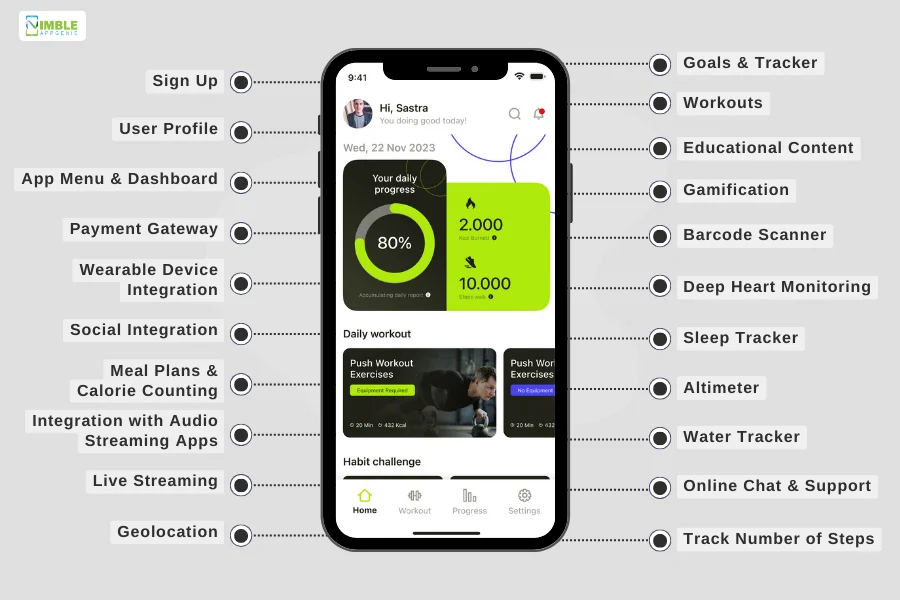
If you want the platform to achieve success and capture customer’s hearts, it’s crucial to work with a healthy mix of essential and advanced features. That’s why, we shall be discussing some of the basic features every workout app should have.
Sign up
This essential feature lets users create an account via phone number, email, or social accounts.
User profile
This feature of the workout application lets the user manage their user profile to edit images, information, and preferences.
App Menu & Dashboard
The app menu has all the important buttons and paths that provide users channel to visit different parts of the app. And the dashboard has all the basic information in one place, in an easy-to-understand way.
Payment Gateway
Payment gateway integration enables users to make payments for a user without using an unsecured third-party platform.
Wearable Device Integration
Wearable device integration is one of the trending solutions in workout platforms. It connects apps with wearable devices like smartwatches and fitness bands.
Social Integration
With the rise of social media platforms like threads app, companies have learned to leverage them to increase their popularity. The social integration feature is a result of that.
Meal Plans & Calorie Counting
As the name suggests, this feature delivers customized meal plans based on the user’s goals and preferences. It also tracks food intake to calculate calories
Integration with Audio Streaming Apps
A lot of workout solutions are integrated with audio streaming apps like SoundCloud. This enables verbal instruction for workouts.
Push Notifications
Push notifications allow the platform to send alerts to users’ smartphones for new updates. This is a crucial feature.
Goals & Tracker
A workout application comes with an in-built fitness tracker. This help user gain insight into their workouts, learning how close they are to their goals.
Workouts
Workout platforms come with a range of fixed workout plans as well as an option for custom plans. Custom workout plans are delivered based on the user’s needs and physical state.
Educational Content
The benefits of educational apps are endless even for fitness enthusiasts. You can integrate it into a workout app to provide fitness-focused Educational content.
Gamification
To drive user engagement and satisfaction, gamification is a good option. As the name suggests, this adds an element of fun to the user interface making it more interesting.
Barcode Scanner
A barcode is like a QR code, it is a physical pattern that holds information and can be scanned. This scanner lets the user get calorie info on food items.
Deep Heart Monitoring
Deep heart monitoring is a feature that analyzes the heartbeat pattern and helps the user optimize their workout accordingly.
Geolocation
Geolocation or geofencing has become a must-have feature, as introduces real-time location tracking ability in the app.
Sleep Tracker
As the name suggests, sleep trackers use wearable devices or even smartphone sensors to track sleeping patterns and time.
Altimeter
An altimeter is yet another sensor that is either in-built or used by a smart device to gain altitude data.
Live Streaming
A lot of companies want to build video streaming apps for dedicated fitness programs. But live streaming integration in the platform is a feature.
Water Tracker
Humans are mainly made of water, that’s why it’s super important to optimize the water intake. Water tracker feature helps with that.
Online Chat & Support
Online chat works much like how popular chatting apps work. It connects the user to the help desk or their personal trainer.
Track the Number of Steps
This is one of the basic features that you should include if you create your own workout app. It counts the number of steps users have walked.
These are the basic features to include when you create a workout app. Let’s look at the development process in the next section.
How to Create a Workout App?
Till now, we have answered questions like: what is a workout app. how does a workout app work, why people love it, why build a workout app, what features, etc.
Now, it’s time to answer the most important question “How to build your own workout app?”
In this section, we shall be going through the detailed app development process to build your own workout app.
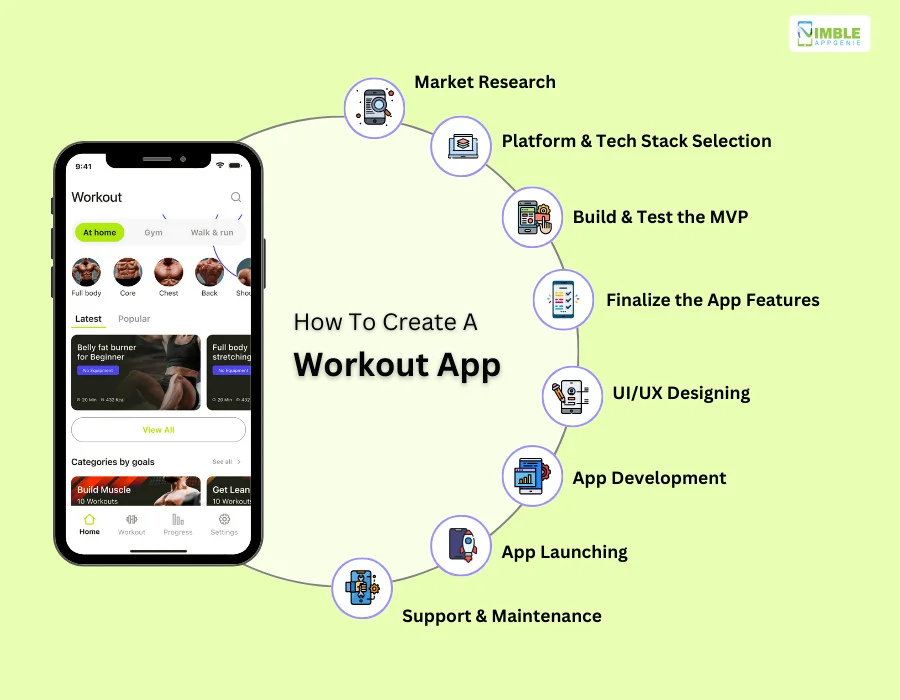
Therefore, let’s get started with the first step:
Step 1: Market Research
The process of building your own workout app starts with mobile app market research.
Data and information collected in the research become the fuel that helps businesses create workout applications that take the industry by storm.
Using this knowledge, check and validate the idea at a basic level. And once this is done, we move to the next step.
Step 2: Platform & Tech Stack Selection
Let’s move to a little more technical part of workout app development, choosing platform and tech stack.
Platforms refer to the app development platform. This gives us two options native or hybrid app development.
Now, there are various major differences between these two platforms. However, native offering Android and iOS app development is more robust and offers a good set of features, and a lot of customizability.
Speaking of which, it’s time to select a mobile app tech stack.
| Category | Technology |
| Frontend Development | React Native, Flutter, Swift (iOS), Kotlin (Android) |
| Backend Development | Node.js, Django, Ruby on Rails, Express.js |
| Database | MongoDB, PostgreSQL, MySQL, Firebase Realtime Database |
| Authentication | OAuth, JWT (JSON Web Tokens) |
| APIs | RESTful API or GraphQL for communication between frontend and backend |
| Server Hosting | AWS (Amazon Web Services), Google Cloud Platform, Heroku |
| Storage | Amazon S3, Google Cloud Storage, Firebase Cloud Storage |
| Real-time Updates | WebSocket for real-time communication |
| Push Notifications | Firebase Cloud Messaging (FCM), Apple Push Notification Service (APNs) |
| Version Control | Git, GitHub, GitLab |
| Continuous Integration/Continuous Deployment (CI/CD) | Jenkins, Travis CI, CircleCI |
| Monitoring and Analytics | Google Analytics, Mixpanel, Firebase Analytics |
| Payment Integration | Stripe, PayPal |
| Security | SSL/TLS for secure communication, Encryption, and Security Audits |
| Containerization | Docker, Kubernetes |
Once all of this is done, it’s time to move to the next section of the blog.
Step 3: Build and Test the MVP
For those who don’t know, MVP refers to a minimum viable product.
It is a bare-bone version of the workout app that is built before creating a workout app, ready for deployment.
MVP development helps customers gather funds and get stakeholder approval. A big benefit is, that if you lack funds, the cost to build MVP is a fraction of app development cost.
And needless to say, it is a good way to gather funds for the app.
Step 4: Finalize the App Features
With MVP development done, it’s time to finalize the features.
While we have already discussed features for workout applications, before you commit to creating a workout app, use data from the MVP stage to remove or add features.
Once this is done, we can start designing.
Step 5: UI/UX Designing
It goes without saying mobile app designing is one of the crucial steps for various good reasons.
Collaborate with mobile app designers to create a UI/UX that is aesthetically pleasing, easy to navigate, and speaks for the business.
When we are done with UI/UX designing, let’s move to app development.
Step 6: App Development
It is in this step of the workout app development process that we actually make the application.
App developers combine the different technologies in one place to create a full working platform. It is much easier to write than do, as it is one of the most extensive steps in the process.
Always maintain good communication with the development team.
Step 7: App Testing
Following development, it’s time to invest in app testing.
It is important to cross-check the app before it is sent for deployment, checking it for errors, bugs, and other issues. That’s exactly what the QA team does here.
When the final testing round is done, workout app is sent for deployment.
Step 8: App Launching
It is time to launch the app in the market.
The process to do so, for iOS app and Android app are completely different.
Read more here: How To Publish Android App in Google Play Store? and Step To Submit App To App Store.
In any case, it takes 2 weeks at most to approve the application.
Step 9: Support & Maintenance
With all said and done, it’s time to start support and maintenance services.
These services are important to ensure the proper working of the platform and for that reason, they continue for the entire duration of the app’s life.
This is how to build a workout app. And it’s time to look at some times to build a workout app like FitOn that’s successful.
Tips for a Successful Workout App Development
You can find how to make a workout app in almost any blog. However, that’s not important. What’s important is what are the things that you must focus on when developing an app.
Therefore, in this section, we shall be focusing on some things that you should be paying special attention to during the development process, to make the app successful among people.
These are, as mentioned below:
1. Assemble or Hire a Good App Development Team
There are various ways to find an app developer. For instance, outsourcing, hiring local agencies, and assembling your own team.
But the important part is, finding a good developer. Therefore, consider the following factors:
- Past projects performance
- Client testimonial
- Niche expertise
- Developer’s location
- Communication
2. Set a Clear Roadmap
Before you start working out app development, you must sit down with the development team and define a clear roadmap and timeline.
This is crucial.
3. Features are Important
We can’t stress this enough but FEATURES ARE IMPORTANT when it comes to workout applications. And what features your app should have depends on the offering and core idea.
However, there are some essential features of the fittech app that you should definitely cover. This remains a true fact whether you go for workout or healthcare app development.
4. Always Work with More than One Idea
Do you have an idea that you are sure will change the health and workout app development market? Well, still keeping an alternative won’t hurt.
It will only save you in case of first idea doesn’t stand in the PoC or MVP stage.
That’s why it is always advised to work with more than one fitness app idea or at least alternative versions of the same.
5. Communicate
It goes without saying development project or any project for that matter thrives when communication channels are open.
You should maintain good communication with the developer to get the best possible results.
6. Test it Again!
Done with the on-demand app development?
Well, test the app. Test it again, until you are 100% sure you have the best possible version. It is more important than what developers let you believe.
With this out of the way, let’s see how much it will cost.
Workout App Monetization Strategies
What if we told you, you can make millions with workout applications?
Well, It is one of the reasons why businesses make the app in the first place. And app monetization strategies are how you do it.
Let’s look at a few of those below:
- In-app advertisement – this is one of the leading monetization models that’s seen in almost every free app.
- In-app purchases – let users buy workouts or plans in-app and generate revenue over that.
- Subscription-based Model – Also known as subscription apps, they allow users to access services when they have subscribed to a plan.
- Sponsored content – this lets the admin promote content from creators who have paid an amount. This is often seen on YouTube.
- Freemium – bring the best of both worlds i.e. premium subscription app and free app with this model.
- One-time Purchase – this is the business model which is often known as a paid application for which you have to pay at the App Store.
How Much Does It Cost to Build a Workout App?
Wondering how much does it cost to develop a workout app?
Workout app development cost ranges between $25,000 and $80,000. The cost depends on various factors like complexity, feature set, platform, development team, and so on.
Based on that, whether you want to build a workout app like Nike Training Club that’s simple or create a workout app that’s complex, that cost can greatly vary.
Here’s a breakdown of the workout app development cost.
| Development Stage | Cost Range ($) |
| Planning & Research | $2,000 – $5,000 |
| UI/UX Design | $5,000 – $12,000 |
| Frontend Development | $8,000 – $20,000 |
| Backend Development | $10,000 – $25,000 |
| Integration | $3,000 – $8,000 |
| Testing | $3,000 – $7,000 |
| Deployment | $2,000 – $5,000 |
| Project Management | $2,000 – $5,000 |
| Contingency | $2,000 – $3,000 |
| Total Range | $25,000 – $80,000 |
If you want to learn the accurate cost of making a fitness app, we highly recommend that you consult a mobile app development company.
How Nimble AppGenie can Help You to Build a Workout App?
Do you want to develop a workout app like MyFitnessPal and take the market by storm?
Nimble AppGenie is here to help you.
We have hands-on experience in developing market-leading workout applications. A popular example of this is, PTyou, a popular workout application developed by a talented team of Nimble AppGenie.
Over the year, we have worked on 700+ applications and maintained 95% customer satisfaction. This has earned us recognition from top platforms
So, if you have an idea, all that is left to do is contact the leading workout app development company, Nimble AppGenie.
Conclusion
In recent years, the demand for workout applications has greatly increased among users, especially after the pandemic. This has led to a surge in investors who want to create a workout application for their business.
This workout app development guide discusses all you need to know about creating a workout app. Now, if you have the idea and drive contact a top company and get into it.
FAQs
The process to build a workout app involves the following steps:
- Market Research
- Platform & Tech Stack Selection
- Build and test the MVP
- Finalize the App Features
- UI/UX Designing
- App Development
- App Launching
- Support & Maintenance
Here’s how the workout applications work:
- User Registration and Profile Creation
- Goal Setting
- Fitness Assessment
- Workout Plans
- Exercise Demonstrations
- Tracking and Logging
- Progress Tracking
- Nutrition Tracking
- Personalization and Adaptation
There are various monetization strategies that can be used to make money with a workout app. Some of them are, as mentioned below:
- Freemium Model
- Subscription Plans
- One-Time Purchases
- In-App Purchases
- Ads and Sponsorships
- Live Workouts and Classes
- Coaching and Personalization
- Corporate Wellness Programs
Nimble AppGenie has a team of expert developers and managers who will take care of your idea and help you convert it into reality using state of the art technology and years worth of experience. So, if you have an idea, contact us.
Workout app development cost ranges between $25,000 and $80,000. The cost depends on the various factors like complexity, feature set, platform, development team, and so on. For more details, contact an app development firm.
The time taken to develop a workout application highly depends on the factors. In any case, you can expect it to be between 4 weeks and 12 weeks depending on the project complexity, developer team, feature set, and so on.
Yes, if you have an unique idea that offer value to the user, it’s totally worth it creating a workout app. This platform can not only earn the business fame, but also help you generate millions in profit in market.
Some of the basic features that every workout app should have are, as mentioned below:
- Sign up
- User profile
- App Menu & Dashboard
- Payment Gateway
- Social integration
- Live Streaming
- Geolocation
- Push Notifications
- Goals & Tracker
- Workouts
To ensure your workout app’s security, we implement encryption for data in transit and at rest, conduct regular security audits, employ strong authentication methods, and keep all software components updated. Our team also uses secure coding practices and protect against common vulnerabilities like SQL injection and cross-site scripting.
The typical tech stack for a workout app includes React Native or Flutter for the frontend, Node.js or Django for the backend, MongoDB or PostgreSQL for the database, and AWS or Google Cloud for hosting. Integrations include OAuth for authentication and Stripe for payments.

Niketan Sharma is the CTO of Nimble AppGenie, a prominent website and mobile app development company in the USA that is delivering excellence with a commitment to boosting business growth & maximizing customer satisfaction. He is a highly motivated individual who helps SMEs and startups grow in this dynamic market with the latest technology and innovation.
Table of Contents




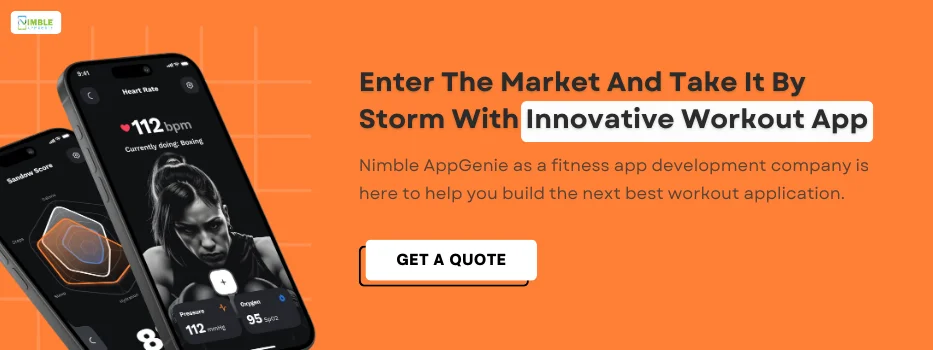
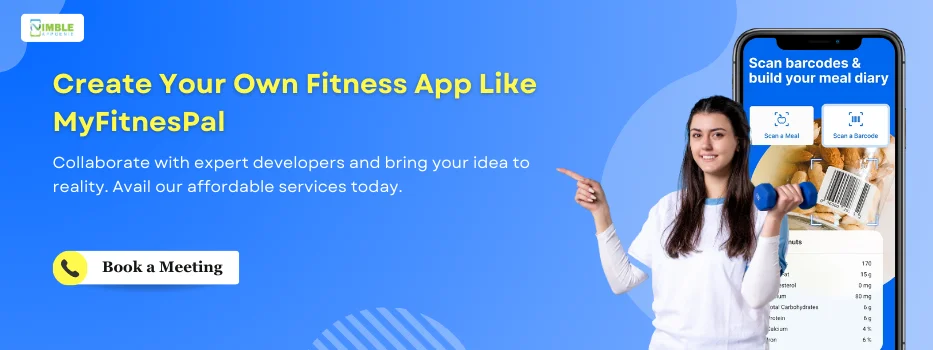








No Comments
Comments are closed.